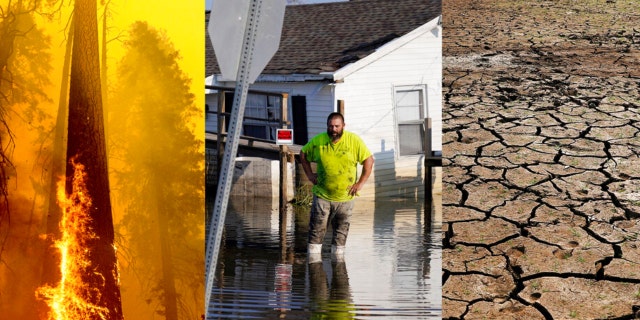G20 leaders reach climate agreement, set carbon neutral goal for ‘around mid-century’
Bjorn Lomborg, president of Copenhagen Consensus, discusses the expensive costs of climate change policy and the hypocrisy among world leaders.
Climate change may impact the production of corn (maize) and wheat as early as 2030, according to NASA researchers.
A new study from the agency published in the journal Nature Food said that under a high greenhouse gas emissions scenario, maize crop yields are projected to decline by 24% and wheat could potentially see a growth of about 17%.
The team of scientists used the climate model simulations from the international Climate Model Intercomparison Project-Phase 6 (CMIP6). They also used the simulations as inputs for Columbia Unversity’s Agricultural Model Intercomparison and Improvement Project (AgMIP) 12 state-of-the-art global crop models.
Each of the five CMIP6 climate models used for this study runs its own response of Earth’s atmosphere to greenhouse gas emission scenarios through the year 2100 and the MgMIP crop models simulate on a large scale how crops grow and respond to environmental conditions.
In all, NASA created about 240 global climate-crop model simulations for each crop.
The researchers examined changes to long-term average crop yields and introduced a new estimate for when climate change impacts will emerge, finding that soybeans and rice projections showed a decline in some regions, though global models differed.
Impacts on corn and wheat, however, were much clearer, as most of the models indicated similar outcomes.
“North and Central America, West Africa, Central Asia, Brazil and China will potentially see their maize yields decline in the coming years and beyond as average temperatures rise across these breadbasket regions, putting more stress on the plants,” NASA wrote Monday in an accompanying news release. “Wheat, which grows best in temperate climates, may see a broader area where it can be grown as temperatures rise, including the Northern United States and Canada, North China Plains, Central Asia, Southern Australia and East Africa, but these gains may level off mid-century.”
In addition to temperature shifts, higher levels of carbon dioxide (CO2) in the atmosphere will have a positive effect on photosynthesis and water retention and crop yields – though often at a cost to nutrition. This will happen more so for wheat than maize.
The rising temperatures – as well as droughts and heat waves – affect the length of growing seasons and accelerate crop maturity.
Crippling drought and record-breaking temperatures parched the West this summer and scientists say climate change will continue to make conditions more extreme and destructive in coming years.
In a United Nations report released in August, climate experts warned that the Earth is getting so hot that temperatures in about a decade will probably blow past a level of warming that world leaders have sought to prevent, calling it a “code red for humanity.”
This combination of 2020-2021 photos shows a burning tree in Sequoia National Forest, California; Nathan Fabre, whose home and boat were destroyed by Hurricane Ida in Lafitte, Louisiana; and the cracked, dry bottom of the Cerro Lagoon during an extended drought in Paraguay. Climate change is fueling heat waves, flooding, drought and nastier tropical cyclones.
(AP Photo/Noah Berger, John Locher, Jorge Saenz)
And the U.N. calculated this week that, between now and 2030, the world will emit up to 31 billion U.S. tons of greenhouse gases beyond the amount that would keep the planet at or below the most stringent limit set in the 2015 Paris climate accord.
In addition to contributing to respiratory disease from air pollution, greenhouse gas emissions trap heat, warming the atmosphere.
Human activities, primarily the burning of fossil fuels, have fundamentally increased the concentration of greenhouse gases in Earth’s atmosphere.
“We did not expect to see such a fundamental shift, as compared to crop yield projections from the previous generation of climate and crop models conducted in 2014,” lead author Jonas Jägermeyr, a crop modeler and climate scientist at NASA’s Goddard Institute for Space Studies (GISS) and The Earth Institute at Columbia University, said in a statement. The projected maize response was surprisingly large and negative, he said. “A 20% decrease from current production levels could have severe implications worldwide.”
“Even under optimistic climate change scenarios, where societies enact ambitious efforts to limit global temperature rise, global agriculture is facing a new climate reality,” he added. “And with the interconnectedness of the global food system, impacts in even one region’s breadbasket will be felt worldwide.”
The team plans to look at economic incentives like changing farming practices and adaptations in future work.
Source: Read Full Article




